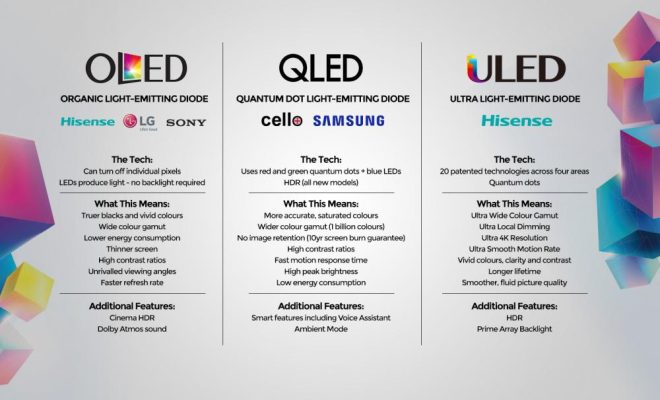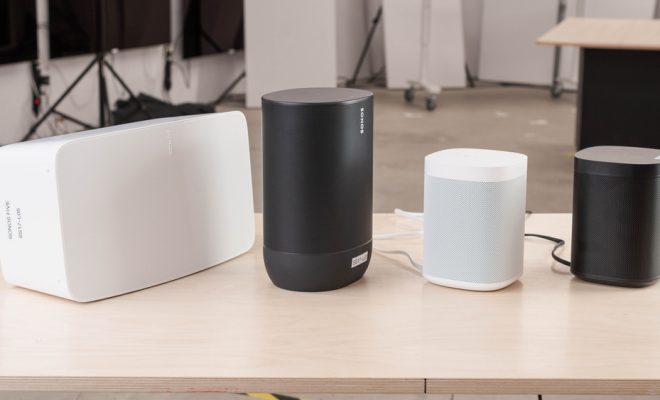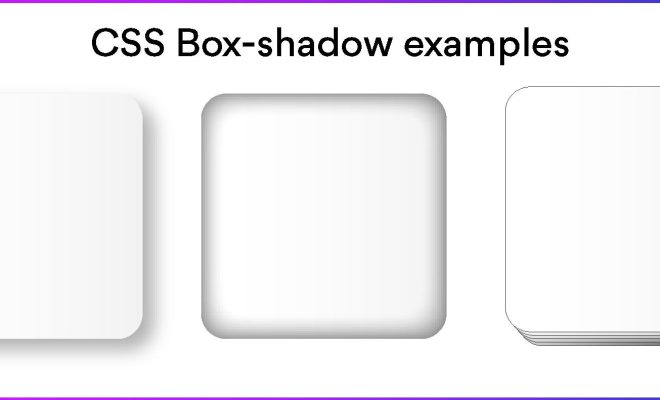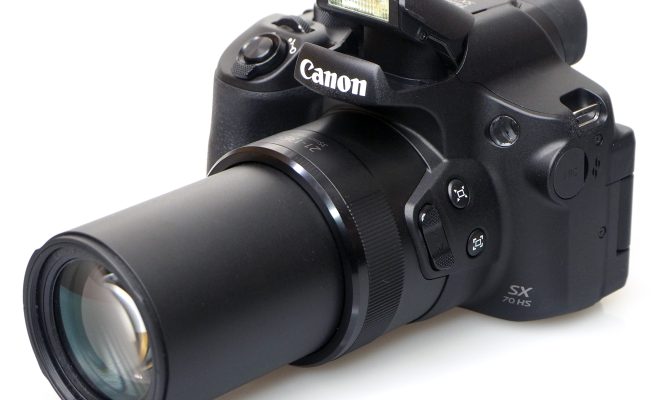ULED vs QLED: What You Need to Know

As the world of technology and entertainment expands, so does the industry of televisions. With new and improved technologies being introduced, it’s time to talk about the latest market for television displays: ULED and QLED. But what are these technologies, and what makes them different from each other?
What is ULED?
ULED or Ultra LED is a proprietary display technology from the Chinese electronics company, HiSense. In simple terms, ULED televisions are LED TVs with additional tweaks in the manufacturing process to enhance the overall quality of the picture. ULED screens use a combination of Ultra HD resolution, local dimming, and high dynamic range (HDR) technology to deliver stunning visuals. On top of that, ULED technology allows for wider viewing angles and improved color accuracy.
What is QLED?
QLED or Quantum Dot LED is Samsung’s flagship display technology introduced a couple of years ago. In contrast to ULED, QLED uses a different approach to color accuracy. In QLED TVs, a layer of quantum dots sits between the backlight and the LCD layer, allowing for more accurate color reproduction. QLED TVs also feature high dynamic range (HDR) technology and improved brightness, which enables them to deliver an impressive visual experience.
How do ULED and QLED compare?
When it comes to comparing ULED and QLED, it’s worth noting that both technologies offer an impressive viewing experience. However, there are some differences between the two that are worth considering.
Color accuracy: In terms of color accuracy, QLED technology is superior. The extra layer of quantum dots on QLED TVs delivers more precise color.
Brightness: In terms of brightness, QLED TVs also have a slight edge. The quantum dots used in the QLED TVs offer better brightness levels for more vivid visuals.
Contrast ratio: Another factor to consider is the contrast ratio. ULED TVs perform better in this category, thanks to their advanced local dimming technology.
Viewing angle: When it comes to viewing angles, ULED TVs have a slight edge. They offer wider viewing angles, making it easier to watch from different positions in the room.
Price: Finally, price is another consideration. QLED TVs tend to be more expensive than ULED TVs. While ULED TVs can provide an excellent viewing experience, they are generally more affordable.
Which is the better option?
Choosing between ULED and QLED largely comes down to personal preference and budget. If you want the highest color accuracy and brightness, QLED TVs may be the best option. However, if you prioritize improved contrast ratio and wider viewing angles, ULED televisions may be the way to go.
In conclusion, ULED and QLED are two impressive technologies that offer exceptional visuals. Both technologies have their advantages and disadvantages, and the choice ultimately comes down to what you’re looking for in a TV. It’s also worth noting that these technologies are still evolving, and newer models are continually being introduced, so be sure to do some research to find the best television for you.






